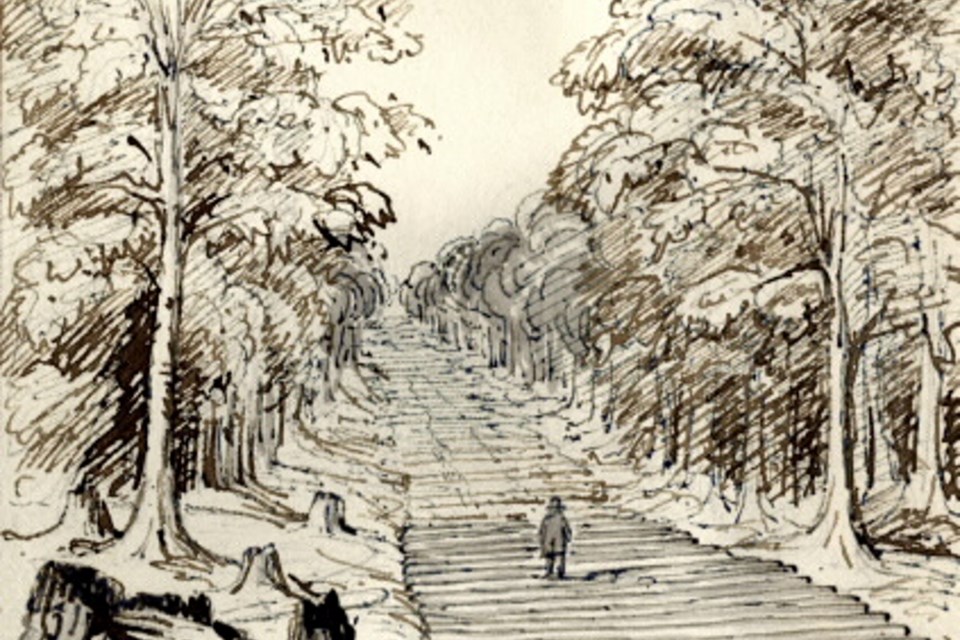The year was 1793 and John Graves Simcoe, the first Lieutenant Governor of Upper Canada (what is now Ontario), and his men were in rough shape.
Making their way north from Toronto (or, rather, what was then York) to Penetanguishene where it was intended a naval base was to be established, they had already travelled 27 miles overland across a narrow trail, then waded through marshes until they reached the southern end of Cook’s Bay.
Yet the journey was only half over. Ahead lay a lengthy canoe trip across lakes Simcoe and Couchiching, then down the river to Matchedash Bay and out into Georgian Bay.
Simcoe was disheartened by the arduous journey. If, as he intended, a naval base to counter-balance American expansion and secure Canada’s west was to be established at Penetanguishene, a straight and dependable road would be required. Simcoe immediately put a regiment of soldiers to work building such a road, carving a route through the bush and swamps of what is today Toronto and York Region.
By 1797, the overland route from York to the east branch of the Holland River leading to Lake Simcoe had been completed.
And there it stopped. Soldiers and military goods would board boats to be transported to Kempenfelt Bay where they would disembark, hike over a nine-mile portage, and then re-embark on boats to go down the Nottawasaga River and then across to Penetanguishene where, indeed, a naval base was built – but not until almost two decades later, during the War of 1812.
Yonge Street itself stalled. The west branch of the Holland River that no one, save for a handful of settlers, saw any good reason to hurdle. Instead, the road as established to date was improved considerably, being straightened and built-up to make it more suitable to traffic.
It wasn’t until 1824 that the west branch of the Holland River was finally hurdled. After months of petitioning from settlers effectively isolated on the west side, a small floating bridge and a corduroy road leading to it from Yonge Street were built by Robert Armstrong and his sons. This represented the first extension of Yonge Street in three decades.
The modest road built by the Armstrongs, rough-hewn and jolting on the body though it might have been, paid immediate dividends as it encouraged settlement and industry. Bradford, essentially, was born from this road.
The very next year Mark Scanlon built the area’s first grist mill for grinding grain into flour. Other industries, from sawmills to smithies, followed. People flooded across the Holland River. The wilderness was tamed, and forests became farms.
Bradford-West Gwillimbury was off and running.



